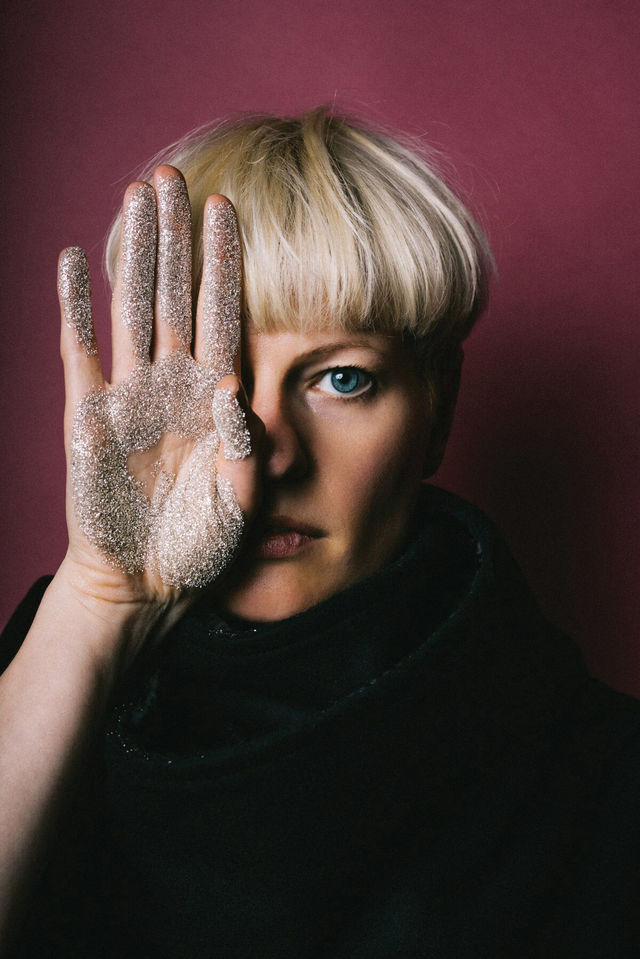FOR THE THOUSANDS of people who turn to Kim Krans’ beautiful tarot cards for answers, it might seem like the artist behind the Wild Unknown deck must have them. But in 2019, when Krans found herself in the throes of an eating disorder in the wake of a painful divorce and miscarriage, she realized she didn’t have the answers at all. She retreated to an ashram in Pennsylvania’s Pocono Mountains, and spent 40 days working through her trauma with art. The result is her new book, Blossoms & Bones: Drawing a Life Back Together, a raw, unselfconscious, darkly funny, and ultimately uplifting graphic memoir. I caught up with the artist by phone at her home in Pennsylvania to talk about perfectionism, recovery, and the healing power of creativity.
When you hit bottom, how did you know art would save you?
It was hope based on the fact that art has always carried me through. I was seeing doctors and therapists. I was talking to friends about the eating disorder I was going through post-divorce and post-miscarriage. But no one was taking me seriously. I thought, I need to get out somehow. What’s the single thing that has been there for me since the beginning? I could have said God or Goddess or energy or the great mystery. But I needed something tactile to connect with that force. And that was holding the pen and allowing that devastated starved feeling I had to draw.
“Draw the feeling” is a central concept in the book. Can you describe what it means?
It comes from the idea in depth psychology [the study of unconscious mental processes] that our darkness is as wise and generous as the bright, shiny parts of ourselves. You can build a relationship with it rather than repress it. Once I got to the ashram, I could turn towards the eating disorder and ask, “Hey, what do you want to become?” It turns out that the eating disorder wanted to use me to make this book. The idea is, “draw the feeling” instead of making a drawing that you can show off to people to boost your ego. What if you let the part of you that’s most afraid to show itself be revealed? You can substitute draw with any word: sing the feeling, dance the feeling, write the feeling. It’s giving voice to what is silenced within us.
What part does creativity play in working through trauma?
We are a very thought-oriented culture. We want to figure out our trauma—label it, fix it, and manage it. Creativity overrides all of that. You’re not trying to heal with one drawing. It’s one little piece at a time—being in this precise moment. With creativity, you are just working with a single page or a single line, knowing that you can breathe through it.
What would you tell someone who wants to start a creative practice of their own?
The idea is drawing or writing without controlling it. Drawing with your nondominant hand is a good way to get started. You can use your dominant hand to write a question: Why am I feeling this way? What’s the real problem? And use your nondominant hand to answer it. We’re trying to bypass by the mind that wants to tell us it has to be beautiful and perfect, to get to a deeper wisdom.
How does this book fit into your recovery?
This book became a map for me. I can’t pretend that it made me perfectly healed, because that’s dangerous territory: “Look at Kim, now she’s perfect, she wrote this book.” The truth is, “Look at Kim, she’s like so many others who are suffering in their own ways. She made this book and she’s still moving through all the complexities of her life.”
By Lisa Butterworth
Photographed by Erika Astrid
This article originally appeared in the Summer 2020 print edition of BUST Magazine. Subscribe today!
More from BUST
Alexandra Chang’s “Days of Distraction” Sets Race, Romance, and Self-Discovery into Focus
9 YA Love Stories That Will Make You Swoon




